Mass-Produced Cu Nanoparticles as Lubricant Additives to Enhance the Tribological Properties of DLC Coatings
Abstract
:1. Introduction
2. Materials and Methods
2.1. Preparation and Characterization of Nano-Cu Particles
2.2. Deposition of DLC Coatings
2.3. Tribological Properties
3. Results and Discussion
3.1. Characterization of Metal Cu Nanoparticles and DLC Coatings
3.2. Effect of Cu Nanoparticles on the Friction and Wear Properties of Steel/DLC Tribo-Pairs
3.3. Discussion
4. Conclusions
- The Cu nanoparticles fabricated by the macro-preparation technique have a core-shell structure with good spherical shape, high sphericity, mono-dispersion between particles and no agglomeration.
- Cu nanoparticles are used as anti-wear additives in lubricants to slightly decrease the friction coefficient and significantly reduce the wear rate of steel/DLC friction pairs, effectively providing wear protection for the surface of the friction pairs. Moreover, the optimized content of metallic Cu nanoparticles in the PAO6 base oil with 0.1 wt.% showed the lowest friction coefficient and wear rate, so the best anti-wear and friction reduction performance was achieved, while the friction coefficient and wear rate increase slightly with the addition above 0.1 wt.%.
- Nanoparticles do not easily reside on the surface and shear to form a lubricant film due to the low adhesion properties of DLC coatings. The tribological mechanism of the nanoparticles is mainly dependent on their rolling at the contact interface of the DLC coating. In addition, Cu nanoparticles reduce friction in steel/DLC friction pairs through nano-bearing action, and reduce stress concentration and wear in friction pairs through the nano-filling effect. The above results provide a new approach to the development of environmentally friendly additives for carbon-based coatings in the solid-liquid composite lubrication systems.
Author Contributions
Funding
Data Availability Statement
Acknowledgments
Conflicts of Interest
References
- Li, D.; Kong, N.; Zhang, B.; Zhang, B.; Li, R.; Zhang, Q. Comparative study on the effects of oil viscosity on typical coatings for automotive engine components under simulated lubrication conditions. Diam. Relat. Mater. 2021, 112, 108226. [Google Scholar] [CrossRef]
- Fan, X.; Xue, Q.; Wang, L. Carbon-based solid-liquid lubricating coatings for space applications—A review. Friction 2015, 3, 191–207. [Google Scholar] [CrossRef]
- Zia, A.W.; Birkett, M. Deposition of diamond-like carbon coatings: Conventional to non-conventional approaches for emerging markets. Ceram. Int. 2021, 47, 28075–28085. [Google Scholar] [CrossRef]
- Wang, J.J.; Cao, X.Q.; Lu, Z.B.; Zhang, G.G.; Xue, Q.J. The improved mechanical and tribological properties of amorphous carbon film by doping boron carbide. Ceram. Int. 2020, 46, 9878–9884. [Google Scholar] [CrossRef]
- Xu, P.; Wang, Y.; Cao, X.; Nie, X.; Yue, W.; Zhang, G. The tribological properties of DLC/SiC and DLC/Si3N4 under different relative humidity: The transition from abrasive wear to tribo-chemical reaction. Ceram. Int. 2021, 47, 3901–3910. [Google Scholar] [CrossRef]
- Wang, Y.; Cao, X.; Zhang, Z.; Huang, K.; Peng, G.; Fang, T.; He, Y.; Wu, J. Formation and wear performance of diamond-like carbon films on 316L stainless steel prepared by cathodic plasma electrolytic deposition. Diam. Relat. Mater. 2019, 95, 135–140. [Google Scholar] [CrossRef]
- Wang, J.; Cao, X.; Zhang, G.; Lu, Z.; Xue, Q. The degradation of humidity sensitivity of friction for tetrahedral amorphous carbon film by spin-coating hexagonal boron nitride. Appl. Surf. Sci. 2020, 509, 145343. [Google Scholar] [CrossRef]
- Yue, W.; Liu, C.; Fu, Z.; Wang, C.; Huang, H.; Liu, J. Synergistic effects between sulfurized W-DLC coating and MoDTC lubricating additive for improvement of tribological performance. Tribol. Int. 2013, 62, 117–123. [Google Scholar] [CrossRef]
- Ruebig, B.; Heim, D.; Forsich, C.; Dipolt, C.; Mueller, T.; Gebeshuber, A.; Kullmer, R.; Holecek, R.; Lugmair, C.; Krawinkler, M.; et al. Tribological behavior of thick DLC coatings under lubricated conditions. Surf. Coat. Technol. 2017, 314, 13–17. [Google Scholar] [CrossRef]
- de Barros Bouchet, M.I.; Mogne, T.L.; Martin, J.M.; Vacher, B. Lubrication of carbon coatings with MoS2 single sheet formed by MoDTC and ZDDP lubricants. Lubr. Sci. 2006, 18, 141–149. [Google Scholar]
- Morina, A.; Zhao, H.; Mosselmans, J.F.W. In-situ reflection-XANES study of ZDDP and MoDTC lubricant films formed on steel and diamond like carbon (DLC) surfaces. Appl. Surf. Sci. 2014, 297, 167–175. [Google Scholar] [CrossRef]
- De Feo, M.; Bouchet, M.I.D.B.; Minfray, C.; Le Mogne, T.; Meunier, F.; Yang, L.; Thiebaut, B.; Martin, J.M. MoDTC lubrication of DLC-involving contacts. Impact of MoDTC degradation. Wear 2016, 348, 116–125. [Google Scholar] [CrossRef]
- Zhang, S.; Hu, L.; Feng, D.; Wang, H. Anti-wear and friction-reduction mechanism of Sn and Fe nanoparticles as additives of multialkylated cyclopentanes under vacuum condition. Vacuum 2013, 87, 75–80. [Google Scholar] [CrossRef]
- Battez, A.H.; Gonzalez, R.; Viesca, J.L.; Fernandez, J.E.; Fernandez, J.M.D.; Machado, A.; Chou, R.; Riba, J. CuO, ZrO2 and ZnO nanoparticles as antiwear additive in oil lubricants. Wear 2008, 265, 422–428. [Google Scholar] [CrossRef]
- Pena-Paras, L.; Maldonado-Cortes, D.; Garcia, P.; Irigoyen, M.; Taha-Tijerina, J.; Guerra, J. Tribological performance of halloysite clay nanotubes as green lubricant additives. Wear 2017, 376, 885–892. [Google Scholar] [CrossRef]
- Wu, H.; Zhao, J.; Xia, W.; Cheng, X.; He, A.; Yun, J.H.; Wang, L.; Huang, H.; Jiao, S.; Huang, L.; et al. A study of the tribological behaviour of TiO2 nano-additive water-based lubricants. Tribol. Int. 2017, 109, 398–408. [Google Scholar] [CrossRef]
- Kalin, M.; Kogovsek, J.; Remskar, M. Nanoparticles as novel lubricating additives in a green, physically based lubrication technology for DLC coatings. Wear 2013, 303, 480–485. [Google Scholar] [CrossRef]
- Zeng, Q.; Yu, F.; Dong, G. Superlubricity behaviors of Si3N4/DLC Films under PAO oil with nano boron nitride additive lubrication. Surf. Interface Anal. 2013, 45, 1283–1290. [Google Scholar] [CrossRef]
- Fan, X.; Li, W.; Fu, H.; Zhu, M.; Wang, L.; Cai, Z.; Liu, J.; Li, H. Probing the Function of Solid Nanoparticle Structure under Boundary Lubrication. ACS Sustain. Chem. Eng. 2017, 5, 4223–4233. [Google Scholar] [CrossRef]
- Wu, Z.; Zhang, W.; Hu, H.; Zuo, S.; Wang, F.; Yan, P.; Wang, J.; Zhuo, R.; Yan, D. Effect of temperature on growth and ultraviolet photoluminescence of Zn doped AlN nanostructures. Mater. Lett. 2014, 136, 95–98. [Google Scholar] [CrossRef]
- Zhang, Y.; Xu, S.; Zhao, Z.; Shi, J.; Zhao, Y.; Zhang, G.; Wu, Z. Mass-produced Cu nanoparticles as lubricant additives for reducing friction and wear. Lubr. Sci. 2022, 34, 235–246. [Google Scholar] [CrossRef]
- Ren, S.; Zheng, S.; Pu, J.; Lu, Z.; Zhang, G. Study of tribological mechanisms of carbon-based coatings in antiwear additive containing lubricants under high temperature. RSC Adv. 2015, 5, 66426–66437. [Google Scholar] [CrossRef]
- Yu, H.L.; Xu, Y.; Shi, P.J.; Xu, B.S.; Wang, X.L.; Liu, Q. Tribological properties and lubricating mechanisms of Cu nanoparticles in lubricant. Trans. Nonferrous Met. Soc. China 2008, 18, 636–641. [Google Scholar] [CrossRef]
- Chen, L.; Wu, J.; Lu, Z.; Shang, L.; Zhang, G.; Xue, Q. Probing tribological performances of hydrogenated amorphous carbon film applied in methane by structural modification with boron. Wear 2021, 470, 203610. [Google Scholar] [CrossRef]
- Kim, D.-W.; Kim, K.-W. Effects of sliding velocity and ambient temperature on the friction and wear of a boundary-lubricated, multi-layered DLC coating. Wear 2014, 315, 95–102. [Google Scholar] [CrossRef]
- Chen, L.; Cao, X.; Lu, Z.; Wang, Y.; Zhang, G.; Xue, Q. Improving the tribological properties of diamond-like carbon film applied under methane by tailoring sliding interface. Int. J. Refract. Met. Hard Mater. 2021, 94, 105380. [Google Scholar] [CrossRef]
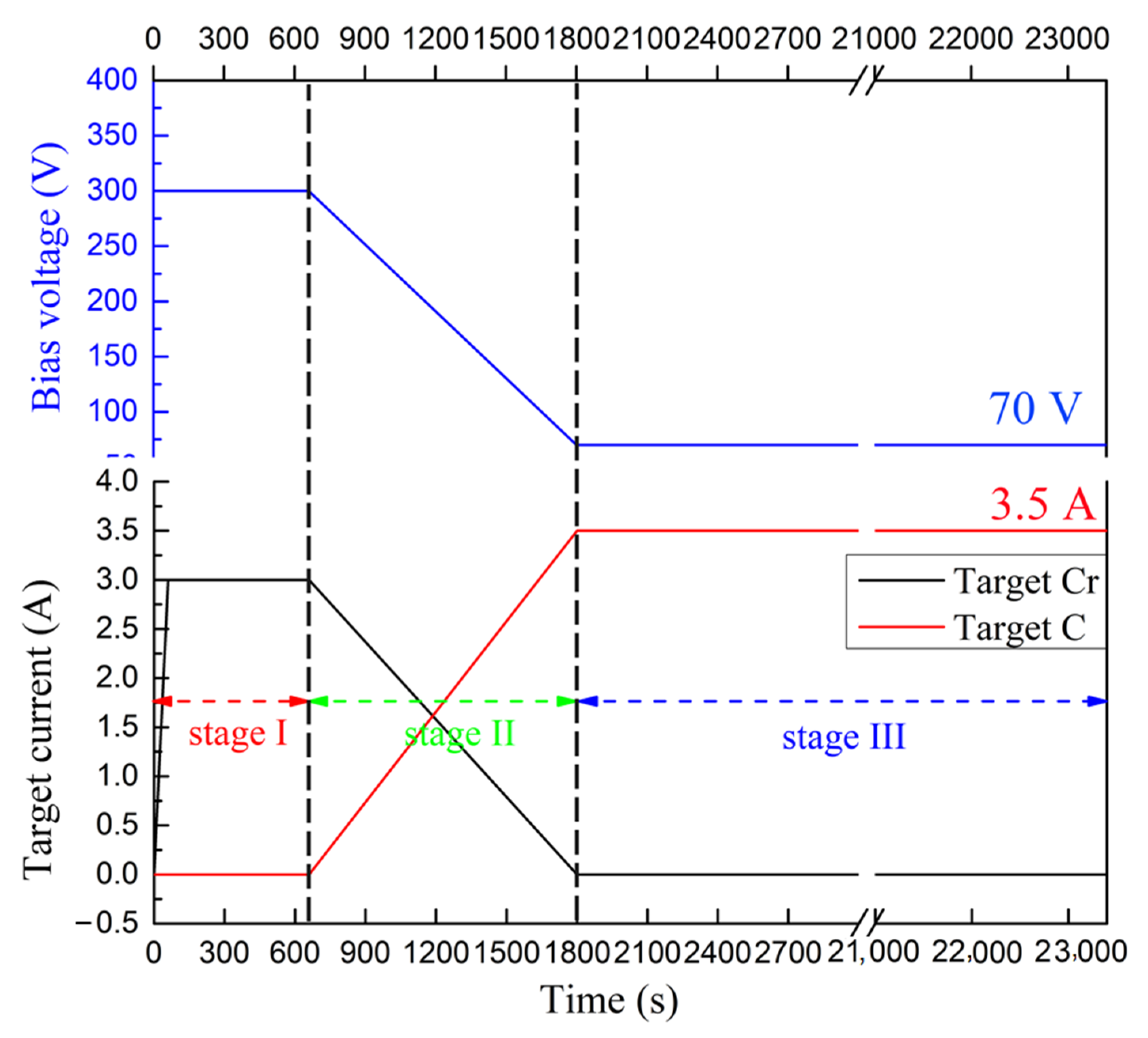
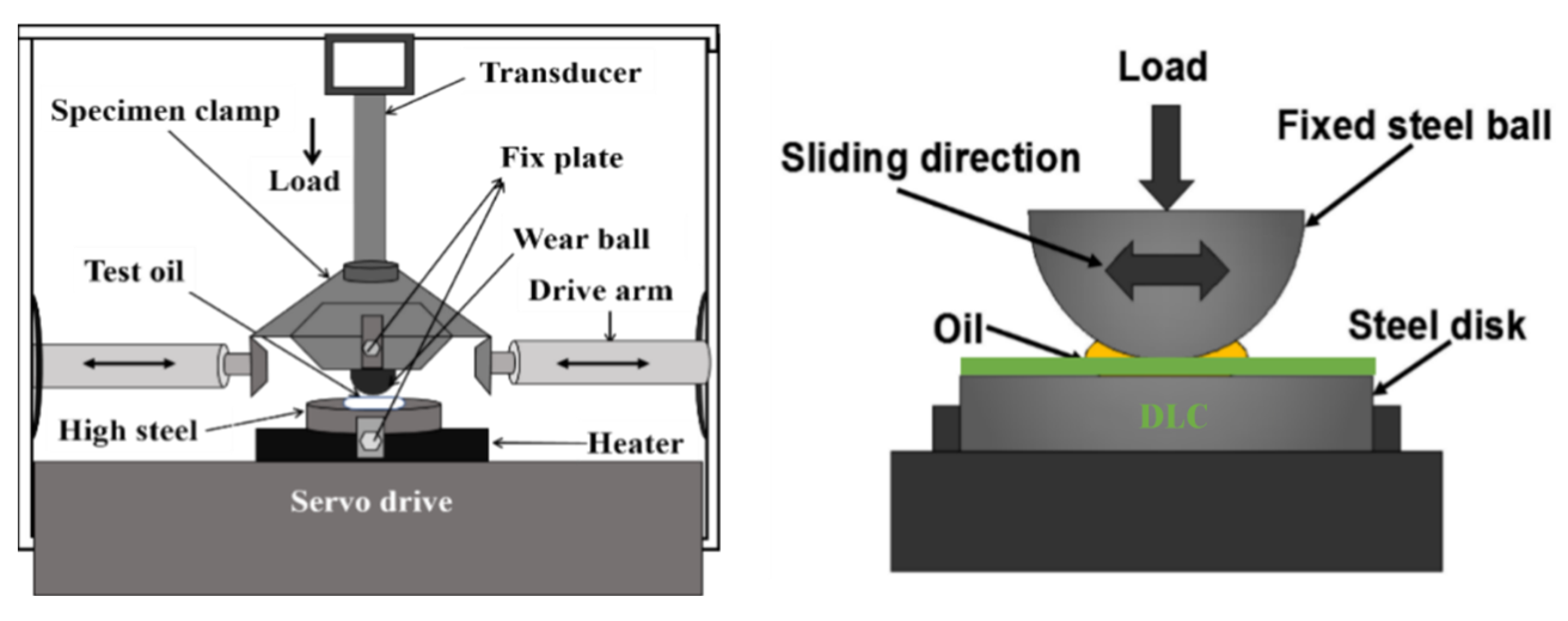
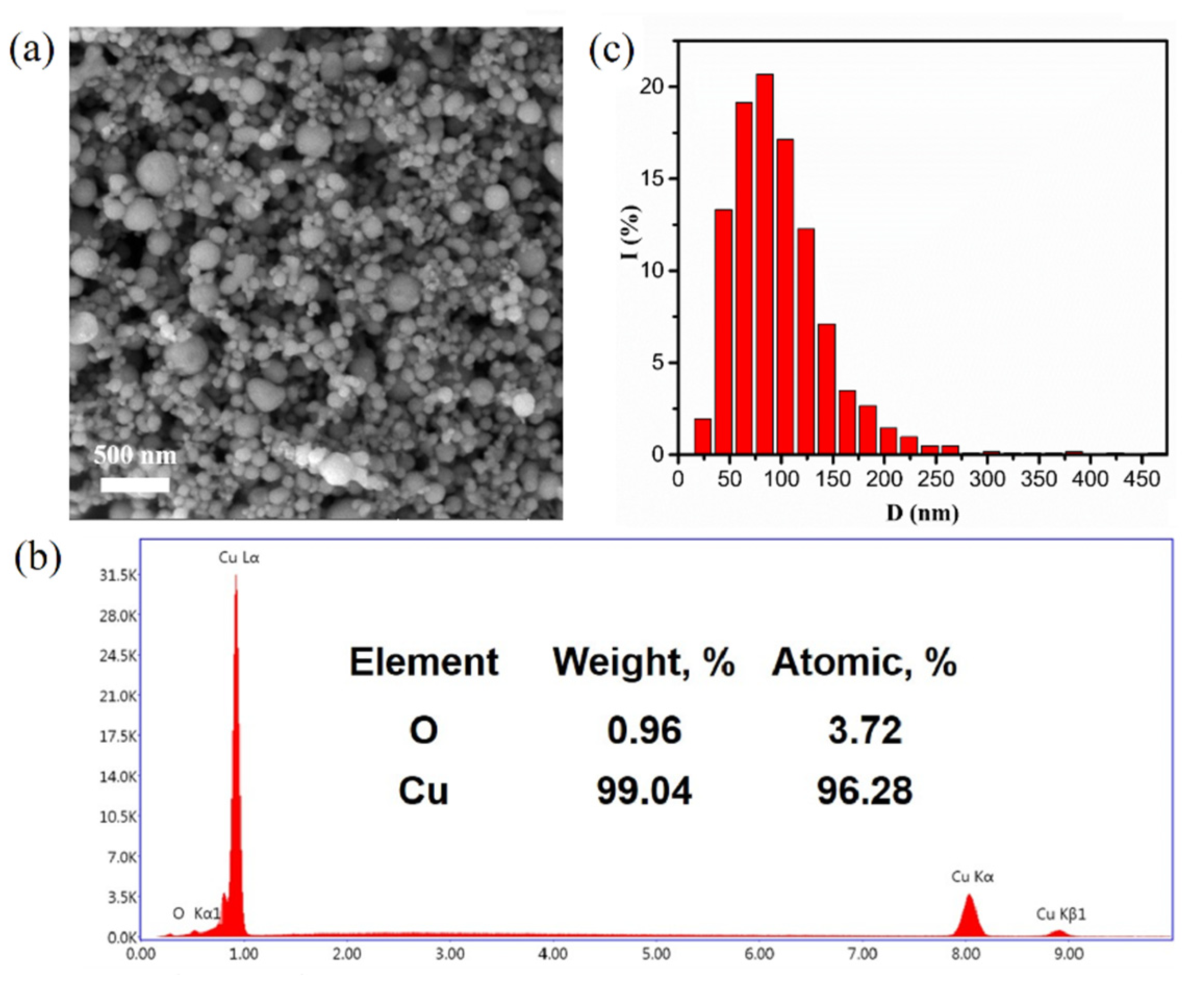
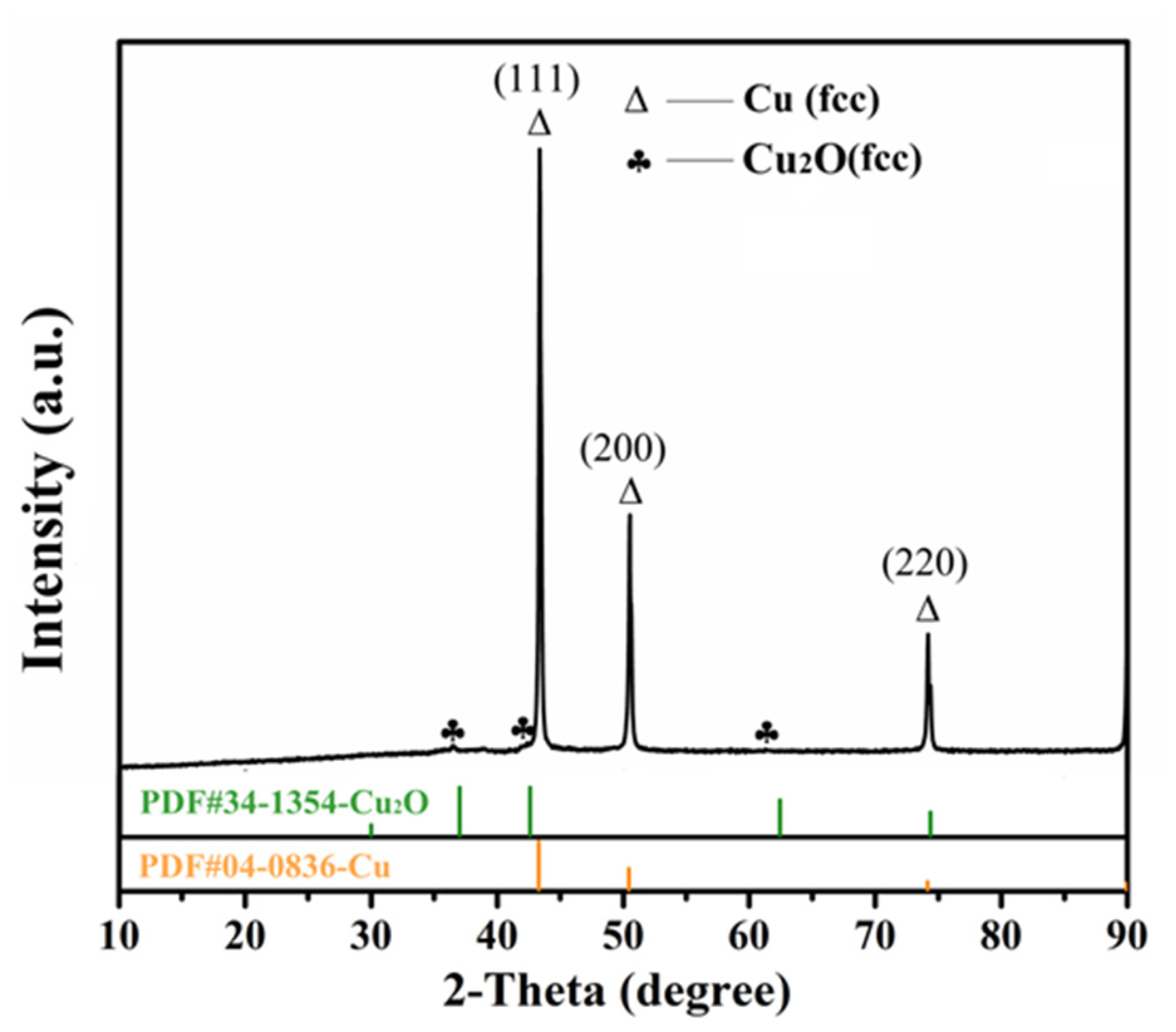


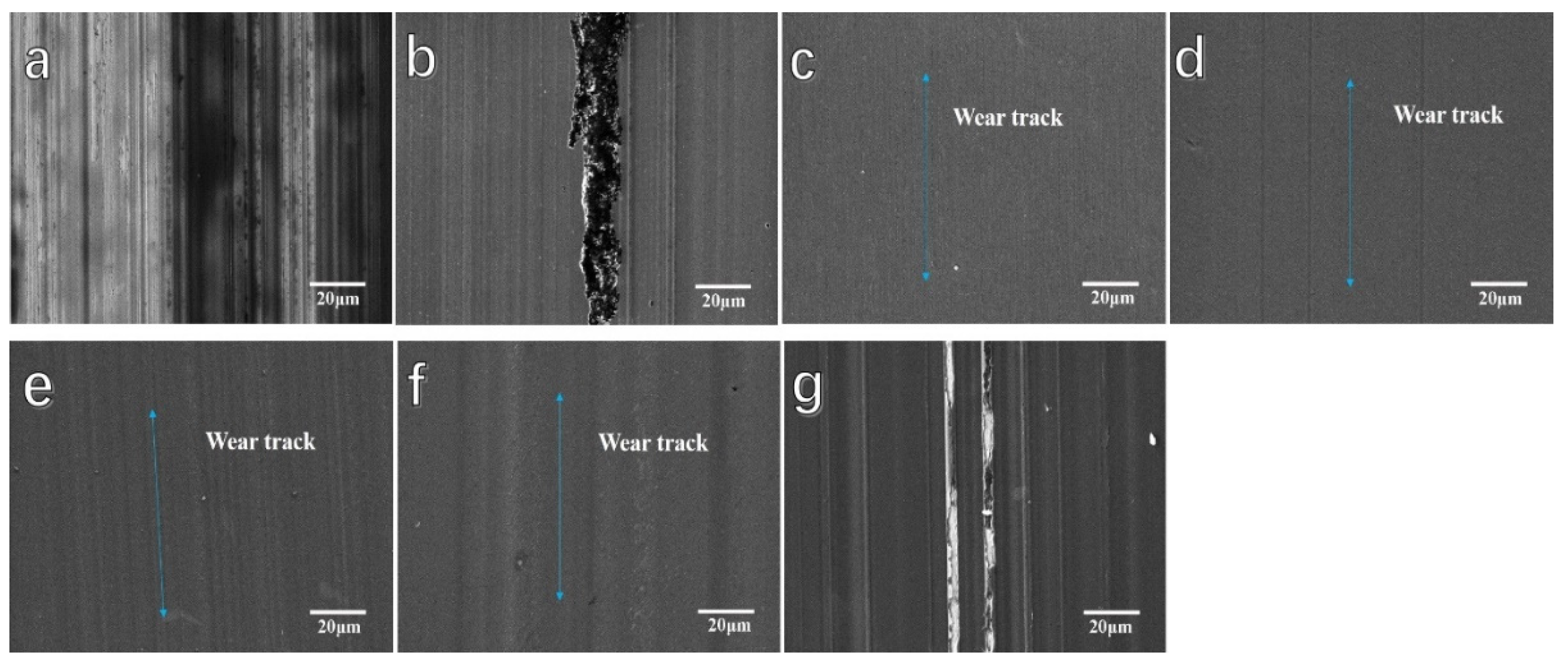
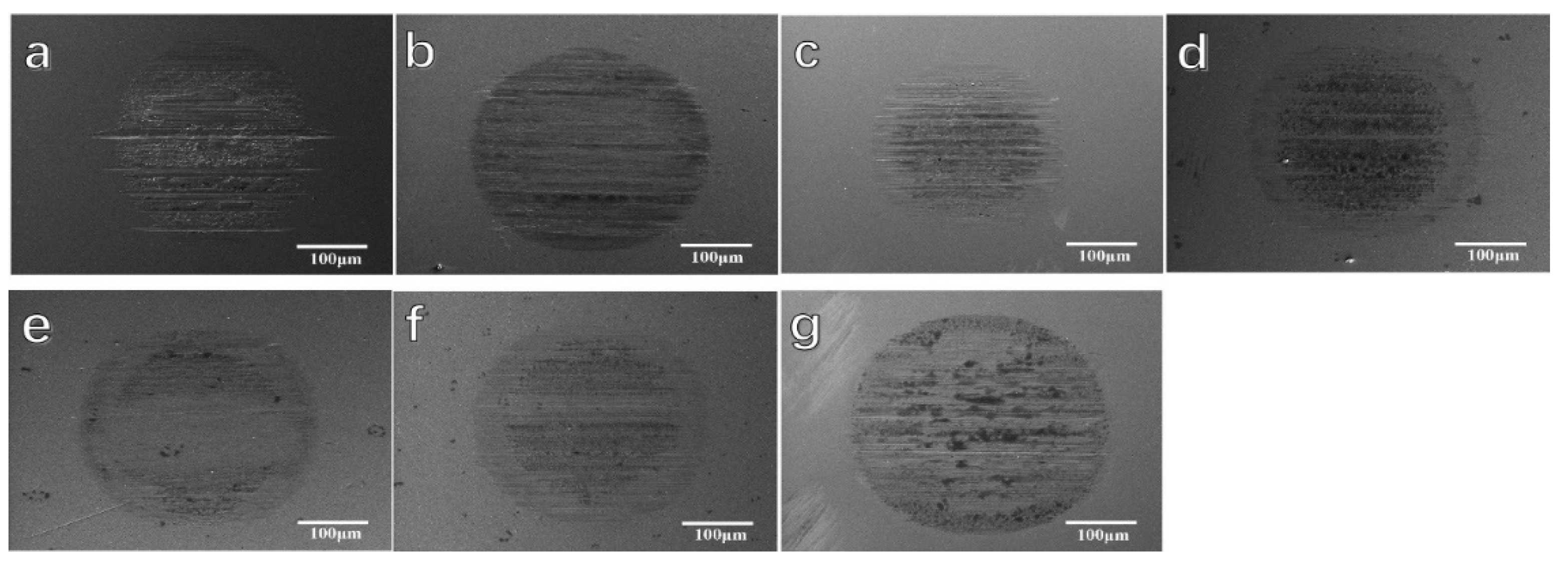
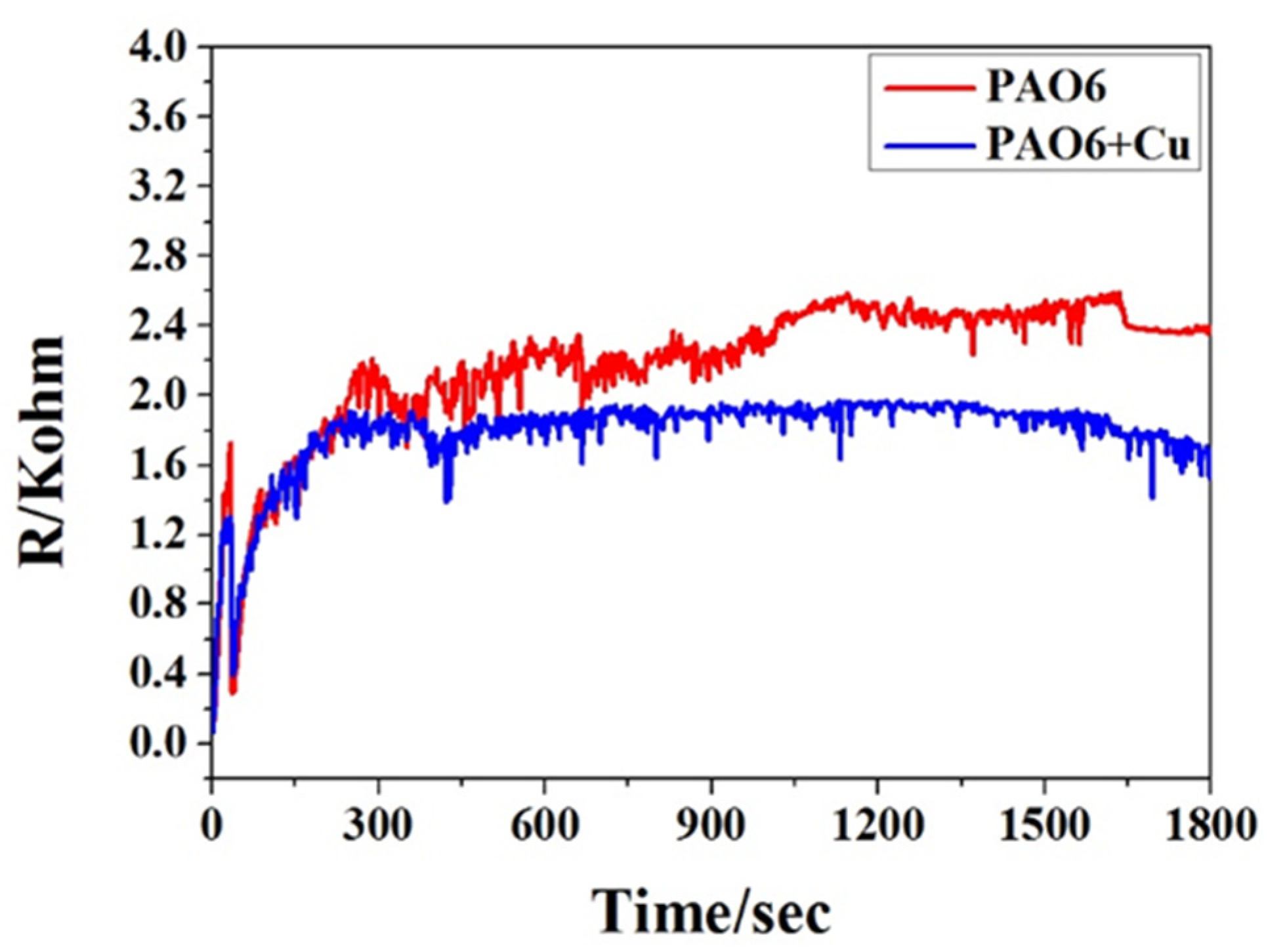
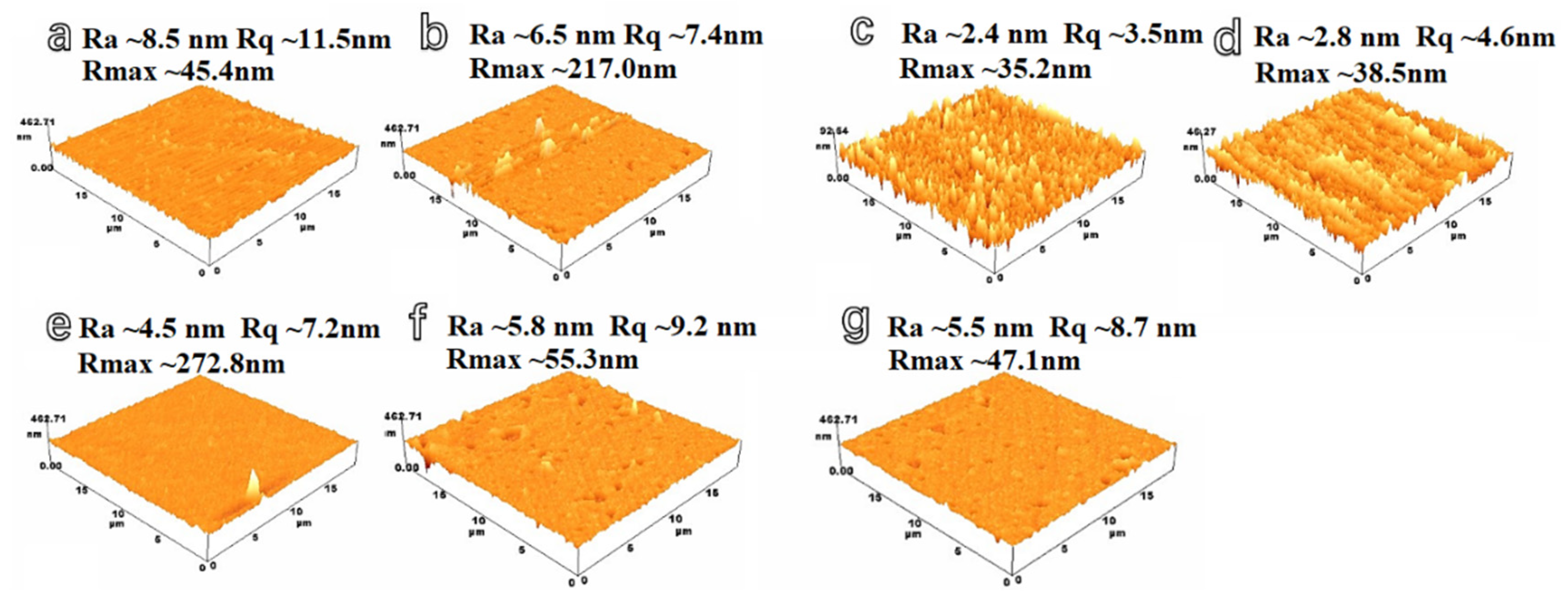


Publisher’s Note: MDPI stays neutral with regard to jurisdictional claims in published maps and institutional affiliations. |
© 2022 by the authors. Licensee MDPI, Basel, Switzerland. This article is an open access article distributed under the terms and conditions of the Creative Commons Attribution (CC BY) license (https://creativecommons.org/licenses/by/4.0/).
Share and Cite
Li, N.; Wang, M.; Wu, Z. Mass-Produced Cu Nanoparticles as Lubricant Additives to Enhance the Tribological Properties of DLC Coatings. Metals 2022, 12, 1350. https://doi.org/10.3390/met12081350
Li N, Wang M, Wu Z. Mass-Produced Cu Nanoparticles as Lubricant Additives to Enhance the Tribological Properties of DLC Coatings. Metals. 2022; 12(8):1350. https://doi.org/10.3390/met12081350
Chicago/Turabian StyleLi, Nan, Mingchang Wang, and Zhiguo Wu. 2022. "Mass-Produced Cu Nanoparticles as Lubricant Additives to Enhance the Tribological Properties of DLC Coatings" Metals 12, no. 8: 1350. https://doi.org/10.3390/met12081350




